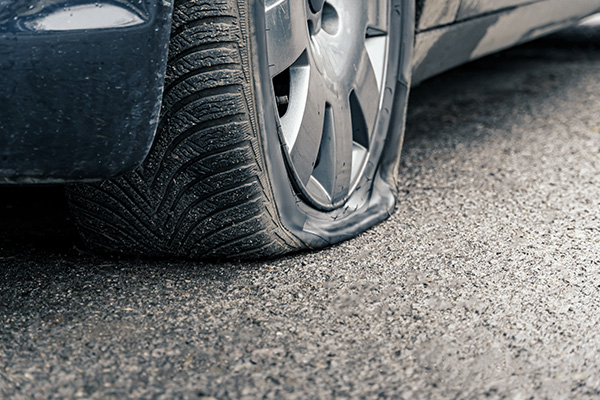
You walk out to your car, and one of your tires looks noticeably lower than the others. You didn’t run over anything, and there’s no nail or screw in sight—so how did it go flat? It’s a common frustration for many drivers, but yes, tires can lose air without a visible puncture, and it happens more often than most people realize.
What causes air loss in otherwise “intact” tires, and how can you catch these issues before they leave you stranded?
Air Loss Through the Valve Stem
One of the sneakiest sources of air leaks is the valve stem—the small component you use to inflate your tire. Over time, rubber valve stems can dry out, crack, or loosen slightly at their base. Even a minor defect here can allow air to slowly escape.
If you’ve recently had new tires installed but didn’t replace the valve stems, this could be the culprit. Some leaks only show up under certain conditions, like after a pressure increase or a temperature change.
Corroded or Bent Wheel Rims
Especially in regions with wet weather or road salt, aluminum alloy wheels can develop corrosion along the bead, which is the part of the wheel where the tire seals against the rim. When this seal is compromised—even slightly—air can slowly seep out.
Sometimes, a wheel that’s been bent by a pothole or curb strike can create a similar effect. In both cases, it’s not the tire itself that’s the issue—it’s the surface it’s mounted to.
Temperature Fluctuations Can Drop Tire Pressure
As the temperature drops, so does your tire pressure. It’s not a leak—it’s physics. For every 10-degree drop in temperature, your tires can lose about 1–2 PSI of pressure. During seasonal changes, especially in early fall and winter, you might find your tire looks low even though it’s sealed tight.
This kind of “invisible deflation” can be alarming, but it’s easy to fix with regular pressure checks and top-offs. Still, it’s important not to ignore it—underinflated tires reduce fuel economy and increase the risk of blowouts.
Bead Leaks From Improper Sealing
If the tire isn’t seated properly when mounted on the rim, it might have a bead leak—where air escapes from the edge of the tire rather than a puncture in the rubber. This often happens if the rim has dirt or rust buildup, or if a low-profile tire is installed incorrectly.
A bead leak might not show up right away but can lead to a slow loss of pressure over days or even weeks.
Internal Tire Damage or Delamination
Not all tire problems are visible from the outside. Internal damage from hitting a pothole or running over debris can cause small separations inside the tire’s structure. These may not create an immediate puncture, but they can lead to slow deflation or, in more serious cases, sudden failure at high speeds.
That’s why it’s important to have a low tire inspected—especially if it happened after a rough impact—even if you don’t see any visible damage.
Porous Rubber or Manufacturing Defects
Over time, tires naturally lose some pressure—even when everything looks fine. In rare cases, especially with older tires or budget brands, the rubber compound itself may be more porous, allowing air to escape gradually.
While this process is very slow, it can lead to a tire appearing low every few weeks. If you find yourself topping off a particular tire more often than the others, it could be worth having it checked for a slow leak or manufacturing flaw.
Catch and Fix the Problem Early
You don’t need a flat to know something’s wrong. If your tire pressure warning light comes on repeatedly, or you notice one tire constantly running lower than the rest, it’s time for an inspection.
Our technicians use:
- Soapy water tests to spot leaks at the valve, bead, or tread
- Pressure loss testing to find hidden leaks
- Rim cleaning and resealing to address corrosion issues
- TPMS diagnostics to ensure sensors are working properly
Taking care of it early not only protects your tire—it improves your safety, fuel economy, and ride comfort.
Fox Run Auto – Trusted Tire Inspections and Replacements in Bear, DE
If one of your tires keeps going flat and you can’t figure out why, stop by Fox Run Auto in Bear, DE. Our team will inspect your tires, wheels, and valves to pinpoint the problem and recommend the right fix—whether it’s a simple reseal or a full replacement.